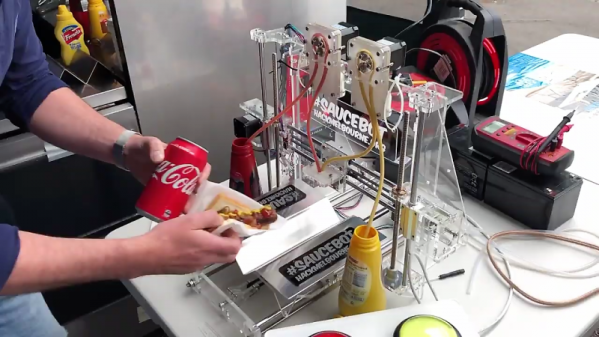You just can’t please some people. Take a 3D-printer disguised as a condiment dispenser to a public event and next thing you know people actually expect you to build a 3D-condiment dispenser for the next time. How can you help but oblige?
We have to admit to more than a little alarm when [ShaneR] sent us this tip, as on first reading it seemed to endorse the culinary sin of putting ketchup on barbecue. But then we watched the video below and realized this dispenser is only applying ketchup and mustard to hot dogs, and while some purists would quibble with the ketchup, we’ll let that slide. The applicator, dubbed SauceBot by the crew at Connected Community HackerSpace in Melbourne, appears to be purpose-built entirely from laser-cut acrylic, including the twin peristaltic pumps for extruding the ketchup and mustard. We’re not sure the Z-axis is entirely necessary for dispensing onto hot dogs, but since this was a community outreach event, it makes sense to go all in. The video below shows it in use at a fundraiser, and while the novelty of it probably sold quite a few dogs, it’s safe to say the food service industry won’t be alarmed that this particular robot will be stealing jobs anytime soon.
Seriously, if your hackerspace is going to have public events with food, something like this could really get the conversation started. Then again, so might a CD execution chamber.














